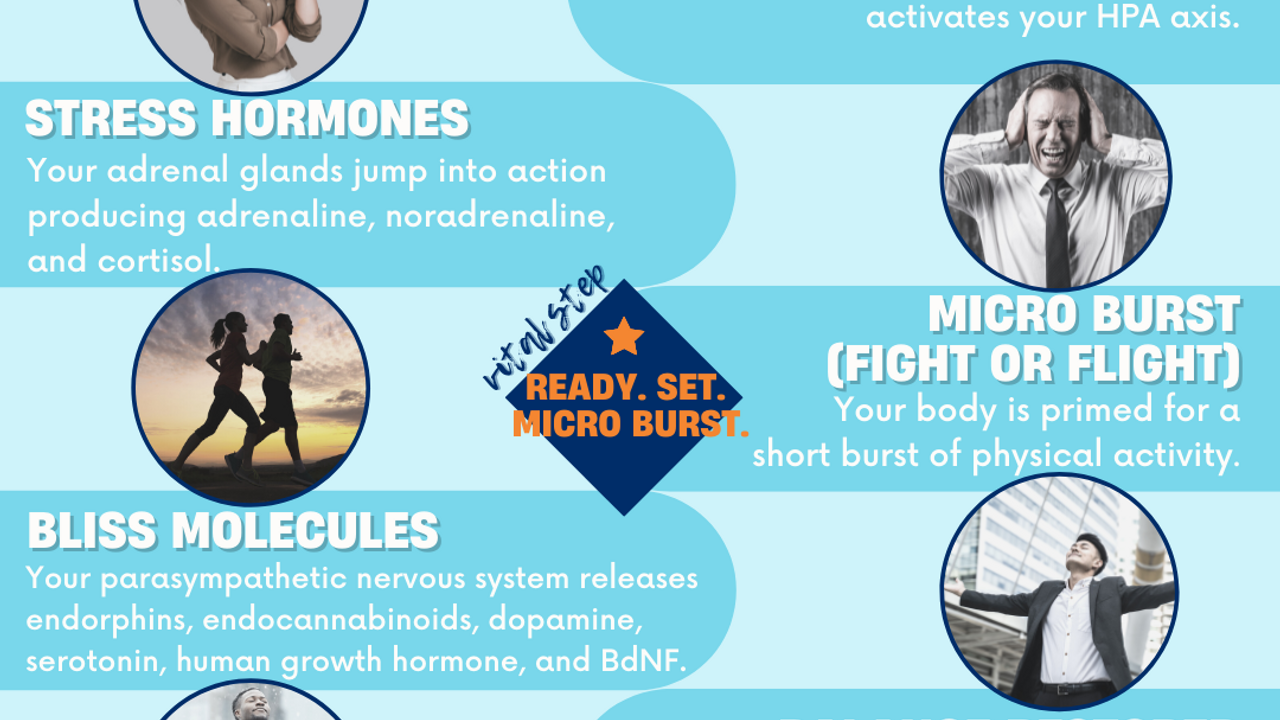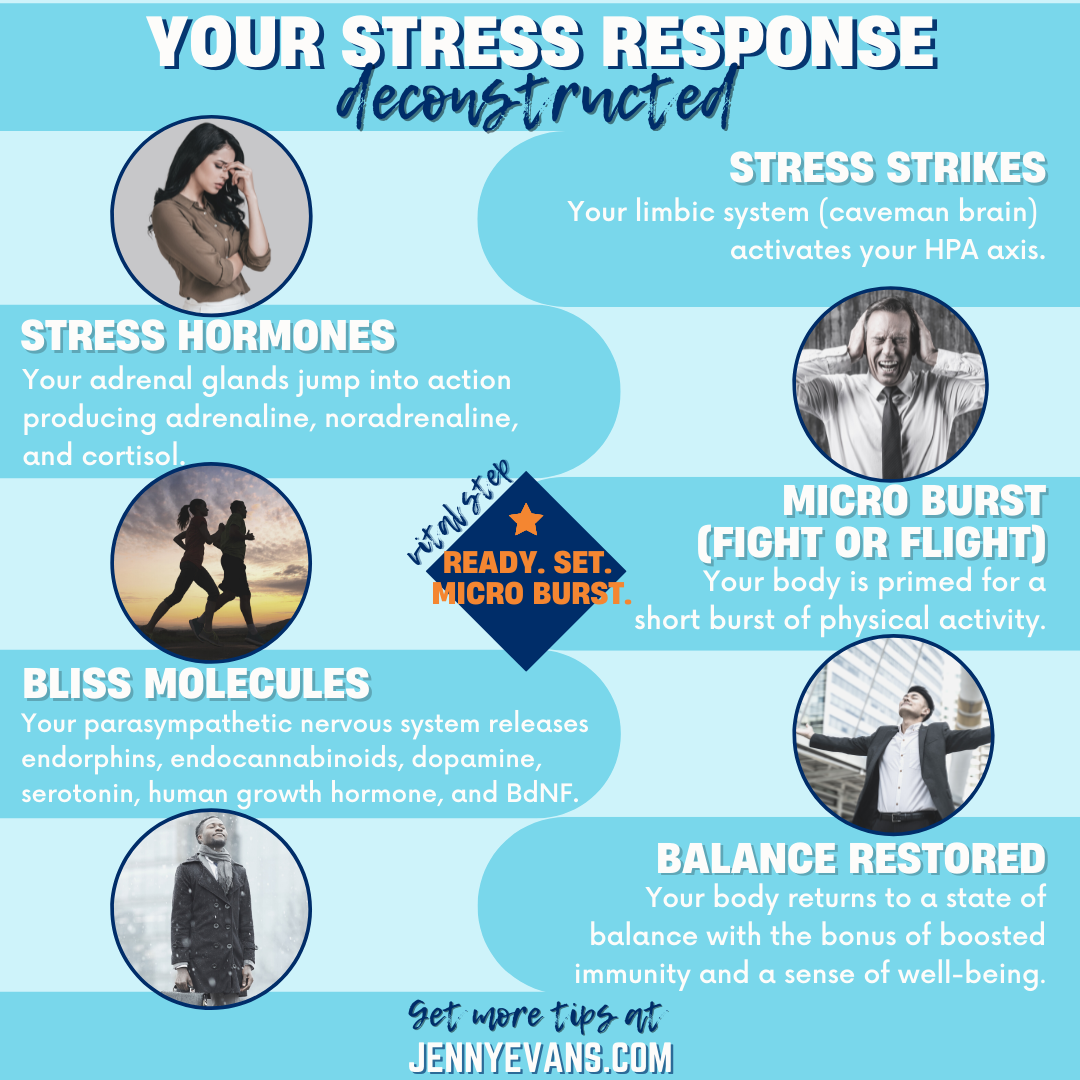
The explanation - and cure - for your stress in 60 seconds
Jul 12, 2022For all you visual learners out there, here’s a micro explanation of what happens to your body & brain when stress hits and how to restore your sense of balance.

And for all you detail-oriented folks out there who want to know more, check out the excerpt below from Jenny's book, The Resiliency rEvolution.
There are many longwinded, scientific definitions of stress I could cite here, but I like to keep things simple. A stressor, or stress, is anything that pushes the body out of homeostatic balance. The stress response is what your body does to restore balance. The stress response is a very good thing.
Stress can be good, bad, physical, psychological, or even just imagined. There are the obvious stressors, such as being under a deadline, missing a sales goal, or having to give an important presentation. But even positive life events can push us out of balance: moving into a new home, having a child, getting married, or getting a promotion. There’s the stress of being sleep deprived or going too long without eating, along with the stress from what we process in our heads, either responding to our current environments, what may happen in the future, or what happened in the past.
Every time we’re exposed to stress of any kind, the stress response is stimulated. I often refer to it as the “stress tsunami” because it’s a tidal wave of hormones released into the body. It’s very powerful, and once it starts, it can’t be stopped.
You’ll learn more details about the fight-or-flight response in chapter two, but here is the CliffsNotes version: the core of the stress response is built around the fact that your muscles need immediate energy to fight or flee in response to stress. (Again, think about Sneaky Pete and the predator.) The brain tells the pituitary gland to secrete stress hormones, which signal the release of energy from storage sites around the body. This stored energy flows into the bloodstream so your muscles can immediately use it for fuel. The subsequent intense physical activity of the fighting or fleeing uses up those stress hormones and causes a new set of hormones—like endorphins— to be released. These new hormones slow things back down and make you feel calm. The end result is that balance is restored. You’ve just hit the reset button.
The stress response is a beautifully designed system—when it plays itself all the way out. The critical component to the system, however, is the fighting or fleeing, the short burst of intense physical activity. I call that key step “Play It Out,” as it allows the stress response to play itself out as it was designed to restore balance. We are all genetically hardwired this way:
STRESS + APPROPRIATE PHYSICAL RESPONSE = BALANCE RESTORED
So what can we do about It?
We have to Play It Out, and physical activity is key. The good news here is that it’s not going to require an hour at the gym or even thirty minutes on a machine to Play It Out. Sneaky Pete didn’t have time for that, and neither do you! 30-60 seconds is all it takes.
*For a quick refresher on how to Micro Burst, watch this video.
10 Micro Strategies to Boost Your Energy & Resilience
Instead of reaching for that candy bar or cup of coffee, here are 10 QUICK & EASY WAYS you can increase your energy and resilience by changing your chemistry and physiology.
Just let me know where you want me to send them.
We hate SPAM. We will never sell your information, for any reason.

